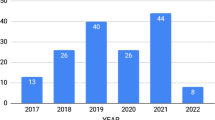Abstract
Many applications face the problem that users are overwhelmed by the large amount of available data. In some cases an objective ranking function can be used to order data items by their relevance – similar to the top 10 results displayed by a Web search engine. Other applications, however, aim at considering more diverse preferences and multiple criteria to help users find good results. Such applications can benefit from skyline queries.
The best known example use case for a skyline query is a hotel booking scenario where users are looking for hotels. Assume many hotels are available and the user wants to find one based on two criteria: distance to the beach and price per night. Further assume that the user is unable to say which of these criteria is more important. So, we need to look for hotels representing a good combination of both criteria. The skyline consists of all hotels that represent a “good” combinations of both criteria. For each of the other hotels, there is always at least one hotel in the skyline that is better with respect to the two criteria. So, being presented the skyline, the user gets an overview of the available hotels and can make the final decision with respect to her personal preferences for the two criteria. No matter how the user will eventually weigh her personal preferences, she will find her favorite hotel in the skyline.
This article gives a short introduction to skyline queries, their main characteristics, and basic ways of processing them.





Similar content being viewed by others
References
Börzsöny S, Kossmann D, Stocker K (2001) The Skyline Operator. In: ICDE’01, pp 421–430
Chomicki J, Ciaccia P, Meneghetti N (2013) Skyline Queries, Front and Back. Sigmod Rec 42(3):6–18
Hose K, Vlachou A (2012) A survey of skyline processing in highly distributed environments. Vldb J 21(3):359–384
Kossmann D, Ramsak F, Rost S (2002) Shooting Stars in the Sky: An Online Algorithm for Skyline Queries. In: VLDB’02, pp 275–286
Kung HT, Luccio F, Preparata FP (1975) On Finding the Maxima of a Set of Vectors. J Acm 22(4):469–476
Papadias D, Tao Y, Fu G, Seeger B (2005) Progressive skyline computation in database systems. Acm Trans Database Syst (tods) 30(1):41–82
Author information
Authors and Affiliations
Corresponding author
Rights and permissions
About this article
Cite this article
Hose, K. Skyline Queries. Datenbank Spektrum 16, 247–251 (2016). https://doi.org/10.1007/s13222-016-0229-2
Received:
Accepted:
Published:
Issue Date:
DOI: https://doi.org/10.1007/s13222-016-0229-2




